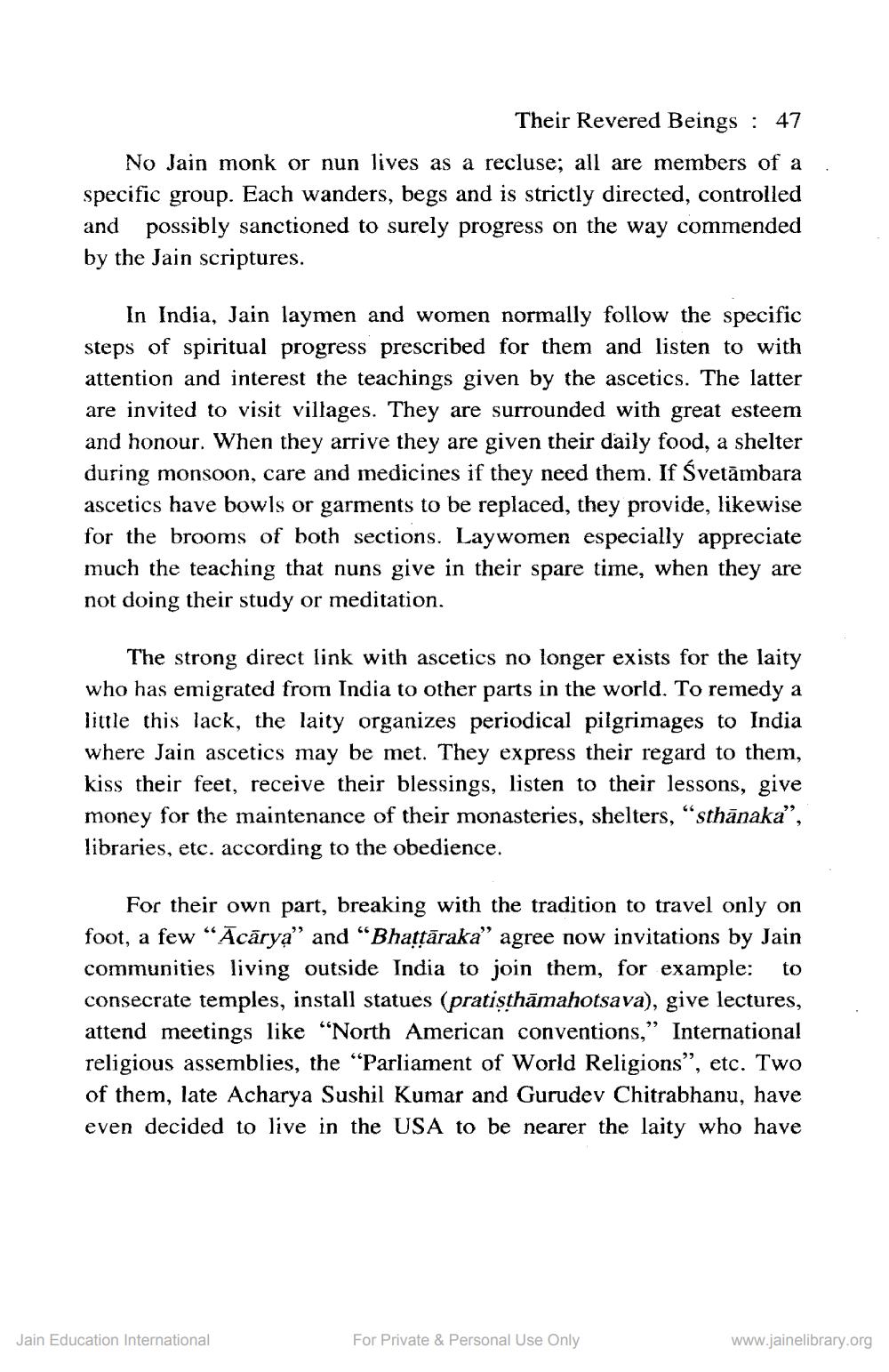________________
Their Revered Beings : 47 No Jain monk or nun lives as a recluse; all are members of a specific group. Each wanders, begs and is strictly directed, controlled and possibly sanctioned to surely progress on the way commended by the Jain scriptures.
In India, Jain laymen and women normally follow the specific steps of spiritual progress prescribed for them and listen to with attention and interest the teachings given by the ascetics. The latter are invited to visit villages. They are surrounded with great esteem and honour. When they arrive they are given their daily food, a shelter during monsoon, care and medicines if they need them. If Svetāmbara ascetics have bowls or garments to be replaced, they provide, likewise for the brooms of both sections. Laywomen especially appreciate much the teaching that nuns give in their spare time, when they are not doing their study or meditation.
The strong direct link with ascetics no longer exists for the laity who has emigrated from India to other parts in the world. To remedy a little this lack, the laity organizes periodical pilgrimages to India where Jain ascetics may be met. They express their regard to them, kiss their feet, receive their blessings, listen to their lessons, give money for the maintenance of their monasteries, shelters, “sthānaka”, libraries, etc. according to the obedience.
For their own part, breaking with the tradition to travel only on foot, a few “Ācārya” and “Bhattāraka" agree now invitations by Jain communities living outside India to join them, for example: to consecrate temples, install statues (pratisthāmahotsava), give lectures, attend meetings like “North American conventions,” International religious assemblies, the “Parliament of World Religions”, etc. Two of them, late Acharya Sushil Kumar and Gurudev Chitrabhanu, have even decided to live in the USA to be nearer the laity who have
Jain Education International
For Private & Personal Use Only
www.jainelibrary.org




